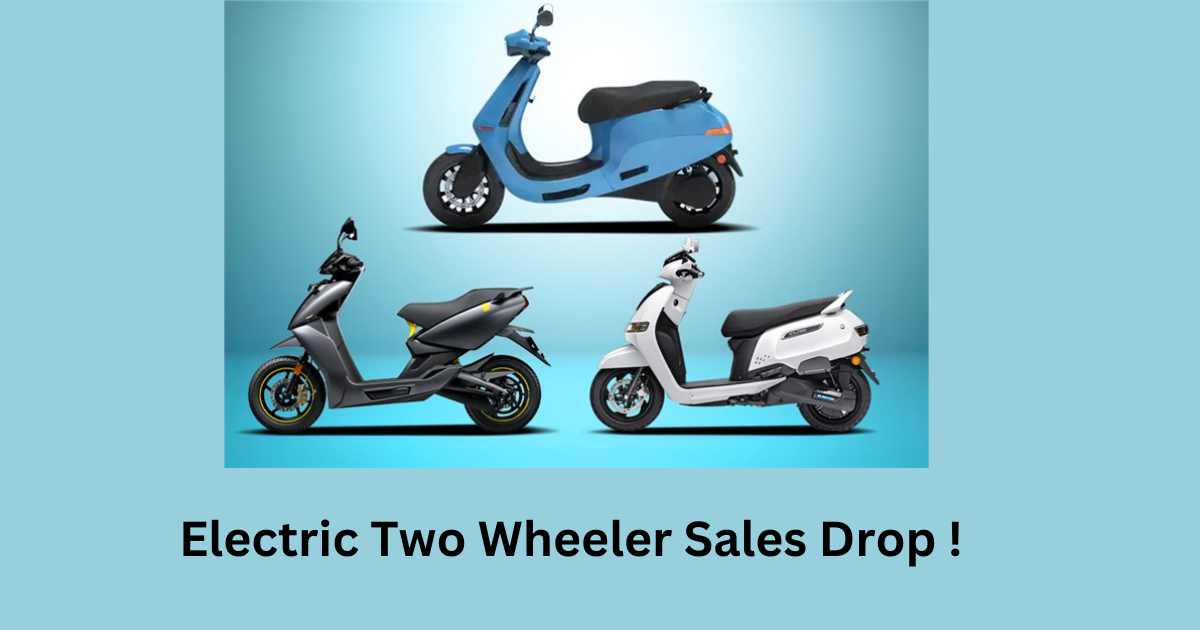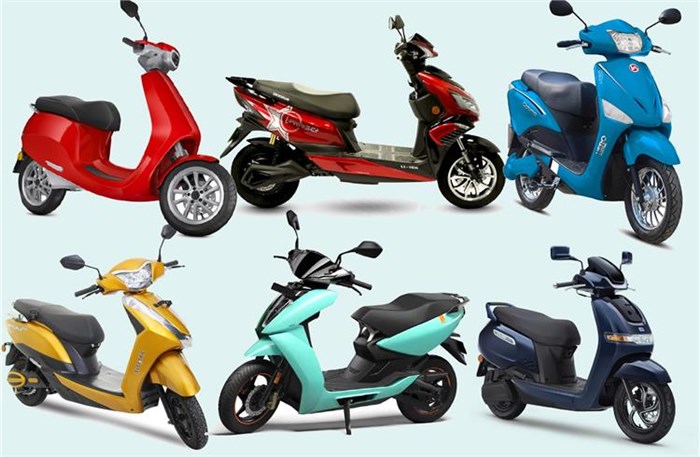Electric Two Wheeler Sales Dip Following FAME II Subsidy Reduction :
In this article we will see all the detail information about the Electric Two Wheeler Sales Dip Following FAME II Subsidy Reduction as we know, the move towards environmentally friendly and sustainable mobility solutions has significantly changed the global automotive industry in recent years. As a viable replacement for conventional internal combustion engine vehicles, electric vehicles (EVs) promise lower pollutants and a cleaner environment. Faster Adoption and Manufacturing of Hybrid and Electric Vehicles (FAME) is a government programme that has been instrumental in encouraging the use of EVs, particularly electric two-wheelers, in India. However, the recent cut in FAME II subsidies has caused a noticeable decline in sales of electric two-wheelers, igniting a discussion about the proper balance between environmentally friendly transportation and commercial viability.
A notable programme launched by the Indian government to encourage the use of electric vehicles there is the FAME subsidy. The purpose of this subsidy programme is to encourage the development and use of hybrid and electric vehicles (EVs) by giving purchasers and producers financial assistance.
According to recent reports, demand for electric two-wheelers is declining as a result of the reduction in the FAME subsidy. Manufacturers will therefore need to place a strong emphasis on leveraging research and innovation to drive down costs.

The FAME II Scheme: An EV Adoption Catalyst :
The main objectives of the FAME II scheme, which was implemented in India, were to hasten the adoption of electric vehicles, lessen reliance on fossil fuels, and reduce vehicle emissions. One of the main elements of this plan was the provision of subsidies to lower the cost and increase accessibility to EVs for the general public. Being a common means of transportation in cities, electric two-wheelers stood to gain a lot from these incentives. The programme improved the infrastructure for charging devices and raised customer awareness while also lowering the initial cost of electric two-wheelers.
Effect of Reduced Subsidies on Sales :
Although both producers and consumers initially expressed enthusiasm for the FAME II programme, a new dynamic has emerged in the market for electric two-wheelers as a result of the recent fall in subsidies. There has been a considerable drop in sales of electric two-wheelers as a result of the subsidy amount’s reduction. Concerns concerning the affordability of EVs and their capacity to compete with conventional internal combustion engine vehicles have been raised as a result of this development.
In the first quarter of FY24, sales of electric two-wheelers significantly decreased, according to the study, as a result of the government’s decision to stop providing FAME subsidies to a select group of Original Equipment Manufacturers (OEMs).
Additionally, the research noted that the uncertainty in the sales of two-wheelers was a result of the subsidies being cut from Rs 15,000 to Rs 10,000 per kWh and from 40% to 15% of the ex-factory price. According to the report, rather than relying on government subsidies, makers of electric two-wheelers will need to place a priority on cutting prices through research and development (R&D) and innovation. With a budget of Rs 75 crore, the national government launched the FAME subsidy programme in April 2015 to encourage the sale of electric vehicles. To lower the total cost of ownership, the plan involved giving cash incentives to Electric Vehicle (EV) dealers.

As the programme was expanded over time, the budget was gradually increased each year. The budget had grown to Rs 145 crore by FY19. The FAME II scheme superseded the preceding iteration beginning in April 2020, with a significant budget increase to 10,000 crore. The term of the plan was initially set for three years, ending on March 31, 2022, but it was extended in June 2021 for an additional two years, making it currently endure until March 31, 2024. The government increased the incentive for electric vehicles in June 2021 from Rs 10,000 per kWh to Rs 15,000. Additionally, from 20% to 40% of the vehicle’s ex-factory price, the maximum subsidy cap was raised. Along with the incentives offered under the FAME plan, Additionally, some state governments created their own advantages. These include road tax savings or full exemptions, as well as subsidies based on the battery capacity per kWh. Due to the government’s lowering of FAME II subsidies this year, the market for electric two-wheelers, which was crucial to the quick rise in EV sales in India, is slowing down.
What CARE Ratings Says ?
According to CARE Ratings, the FAME II subsidy, which permitted a subsidy of up to Rs 60,000, brought down the total cost of electric two-wheelers to the point where it was comparable with the costs of two-wheelers fuelled by petrol. Demand soared in FY22 and FY23 as a result. But with a reduction in the subsidy to Rs 10,000 per kWh, the government beginning on June 1 of this year, a maximum of 20% of the ex-factory price. The sales of electric two-wheelers were immediately impacted by this.
CARE Ratings initially expected that electric vehicles would drive the two-wheeler industry’s rise, despite the fact that their starting position was lower than that of vehicles with internal combustion engines. However, as noted in the research, the reduction in FAME subsidy, which went into effect on June 1, 2023, has slowed the sector’s earlier, significant growth. In the long run, technological developments will reduce battery costs, bringing electric two-wheelers into price competition with ICE vehicles and boosting sales of electric two-wheelers, according to Sudarshan Shreenivas, Director at CARE Ratings.
Sustainability and economic viability must be balanced :
A crucial concern about the delicate balance between sustainability and economic viability is raised by the reduction in subsidies. While promoting eco-friendly transit options is necessary for a cleaner future, it’s also critical to take customers’ budgetary concerns into account. In order to guarantee the electric two-wheeler market’s continued growth, it is crucial to strike a balance between these two variables.
The Next Steps :
A multifaceted strategy is needed to overcome this obstacle and maintain the growth of electric two-wheelers:
Gradual Reduction: Rather than reducing subsidies suddenly, firms and consumers could have more time to adapt to the shifting cost structure if subsidies were reduced more gradually.
Innovation and Efficiency: To increase battery technology, range, and efficiency and lower the overall cost of EVs, manufacturers should concentrate on research and development.
Charging Infrastructure: To inspire consumer confidence, a reliable and extensive charging infrastructure is necessary. Governments and commercial organisations should work together to construct charging stations as soon as possible.
Awareness Campaigns: Raising awareness among consumers about the long-term benefits of electric two-wheelers, such as lower operating costs and reduced environmental impact, can help mitigate concerns about higher upfront costs.
Conclusion :
The recent decline in sales of electric two-wheelers following the elimination of FAME II subsidies demonstrates the precarious balance between encouraging environmentally friendly transportation and taking into account practical economic factors. It is vital to make sure that policy choices strike the proper balance as India and the rest of the globe move towards a cleaner future, facilitating the expansion of the electric car industry while making environmentally friendly options financially accessible to everyone. Governments, businesses, and consumers working together will be essential in determining how quickly electric two-wheelers are adopted in the years to come.
Frequently Asked Questions (FAQ’s) :
1.Is subsidy on electric scooter reduced?
The government was providing about 40% subsidy to the EV company owners on the electric vehicle’s initial price after being manufactured. Now, it has been decided that the subsidy cost provided to them will be reduced to 15%, by revising the FAME II scheme
2.How do I get Fame 2 subsidy on my electric scooter?
- You must have a valid ID proof.
- You must have never claimed a FAME 2 subsidy before for electric two-wheelers.
- The name provided during the registration must exactly match the name on the ID proof.
3.What is the subsidy cap on electric two-wheelers eligible under the Fame II scheme?